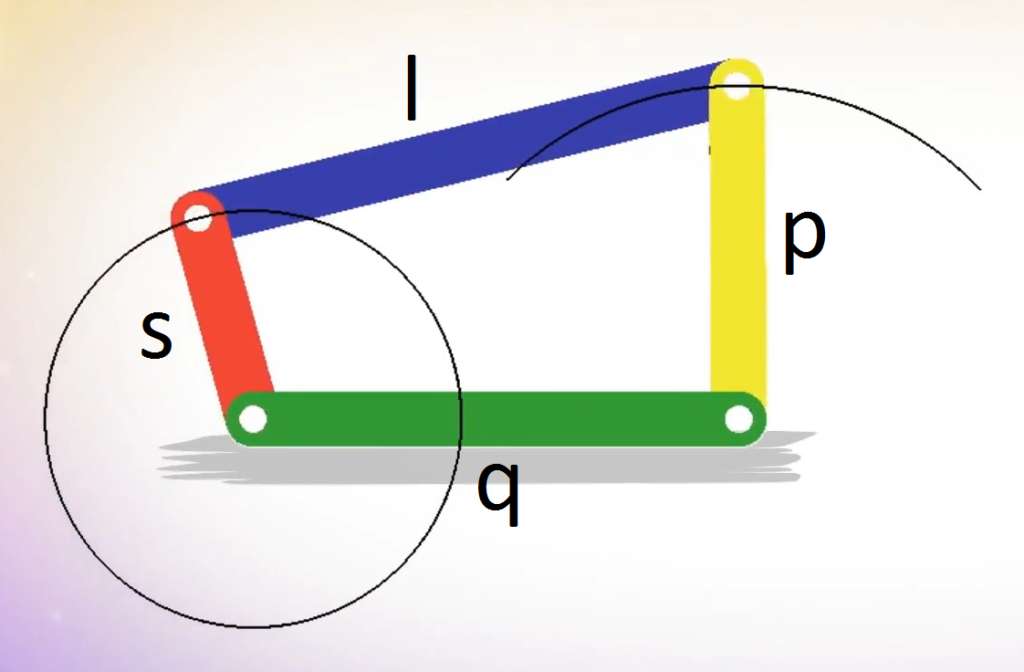The Grashof’s law states that for a four-bar linkage system, sum of the shortest and longest link of a planar quadrilateral linkage is less than or equal to the sum of the remaining two links, then the shortest link can rotate fully with respect to a neighboring link.
Consider a four-bar-linkage. Denote the smallest link by S , the longest link by L and the& other two links by P and Q.
If the Grashof’s Law condition is satisfied i.e S+L ≤ P+Q,
then depending whether shortest link ‘S’ is connected to the ground by one end, two ends, or no end there are 3 possible mechanisms. They are:
1. Double crank mechanism
2. Double-rocker mechanism and
3. Crank and Rocker Mechanism
1. Double crank mechanism
In double crank mechanism, the shortest link ‘S’ is ground link. Both input crank and output crank rotate at 360°.
Grashof’s condition for double crank mechanism: s+l > p+ q

Let: ‘s’ = length of shortest link,
‘l’ = length of longest link,
‘p’ = length of one remaining link and
‘q’ = length of other remaining link.
2. Double-rocker mechanism
In double-rocker mechanism, the shortest link ‘S’ is coupler link. The coupler link can rotate 360°.
Grashof’s condition for double crank mechanism: s+l > p+ q

3. Crank and rocker mechanism
In crank and rocker mechanism, the shortest link “S’ is input crank or output crank. Input crank or output crank rotates 360°.
Grashof’s condition for double crank mechanism: s+l < p+ q

4. Parallel linkage mechanism
parallel linkage mechanism is a special case of Grashof’s criteria, where the sum of the shortest link ‘S’ and longest link ‘L’ of a planar quadrilateral linkage is less than or equal to the sum of the remaining two links ‘P+Q’.
Grashof’s condition for parallel linkage mechanism: s+l = p+ q



